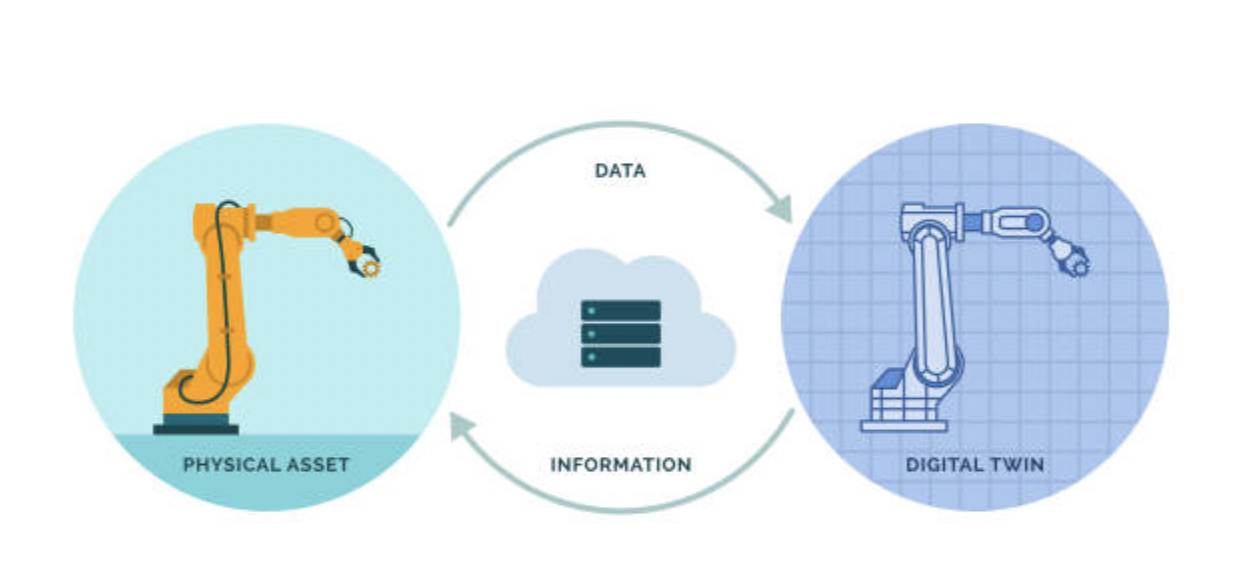Introduction
The idea of digital twin technology was first put forth in 1991, with the publication “Mirror Worlds”, written by David Gelenter. However, it was Dr. Michael Grieves ( University of Michigan ) who first applied the concept to manufacturing in 2002 and formally announced the software idea. Eventually, NASA’s John Vickers coined the term “Digital Twins” in 2010.
A digital twin is a virtual model or an approximate copy of a system that spans its lifecycle, gets updates from it, and uses AI in decision-making. For example, the digital twin of a wind turbine can receive continuous measurements, like speed and temperature. It can then apply these conditions on its virtual self and run various simulations. The insights thus generated can be used to predict output in different weather conditions and help in the design of future wind turbines.
According to Fortune Business Insights, the global digital twin market size was valued at $8.60 billion in 2022 & is projected to grow from $11.51 billion in 2023 to $137.67 billion by 2030, which just goes to show how important this technology is going to be.
Types of Digital Twins
Component Twins/Part Twins: The smallest functioning unit of a digital twin is called component twin. For example, a dynamo-motor within a wind turbine. Part Twins are also similar but of lesser importance.
Asset Twins: These are two or more components that are somehow tied together, in terms of functioning. These twins help you understand the interaction between them, which can be later turned into actionable insights.
System or Unit Twins: These are combinations of Component Twins and Asset Twins and give insight into the working of these elements in the larger system.
Process Twins: The largest unit containing many systems is called a Process Twin. It gives insight into the timing of working of the system units, so that lags can be avoided and max efficiency can be achieved
Applications
Power-generation equipment: High power engines like jet engines, locomotive engines and turbines are expensive and require regular maintenance. Digital Twins can help develop a timeline for repairs and reduce costs
Structures and their systems: Repairs and monitoring of HVAC systems in large buildings can be done through digital twins. Re-modeling and re-constructions can also be aided by digital twins.
Manufacturing Operations: A digital twin helps you monitor manufacturing machines at all times and check their parts for repairs. New variations for products can also be designed by examining their processing through the assembly line, using digital twins
Healthcare Services: With smart sensors patients can be monitored with their digital twins. The effects and interactions of various medications can also be ascertained.
Automotive Industry: Cars contain many complex and co-functioning components which can be analyzed for repairs and performance enhancement. Newer models and variations can also be designed based on insights from digital twins of previous ones.
Urban Planning: Civil Engineers and architects can visualize town and city development in 3D using digital twins. Projections and simulations can be run to help in the construction and planning.
Future of Digital Twins
The future of digital twins is limitless with the application of more and more cognitive and computing power to it. Further development of AI and Quantum Computing can bring disruptive revolutions in the way insights are drawn from Digital Twins. With the advantage of better R&D, output performance and repair and maintenance, Digital Twin Technology is here to stay for a long time.
Image Sourced from Freepik
